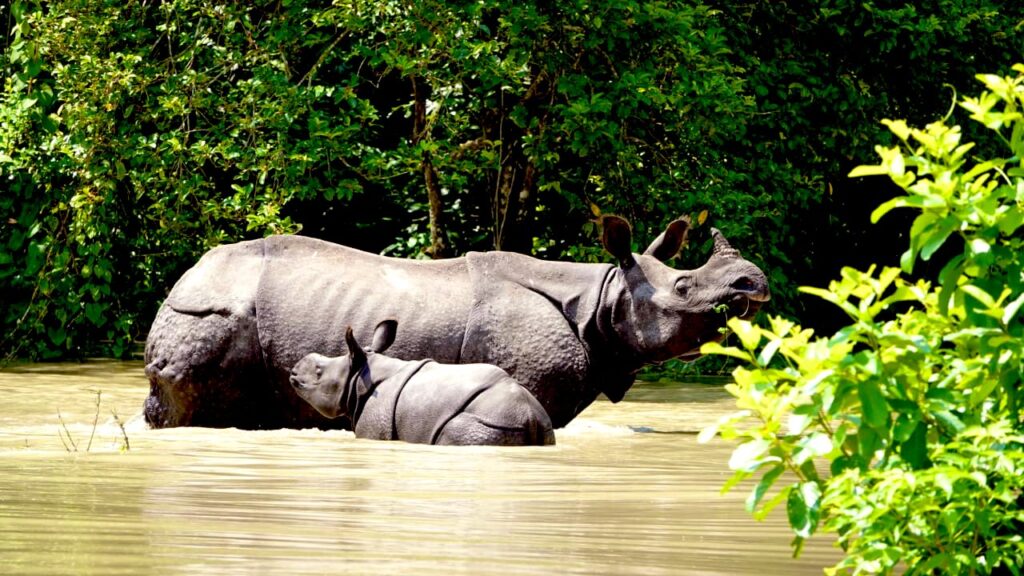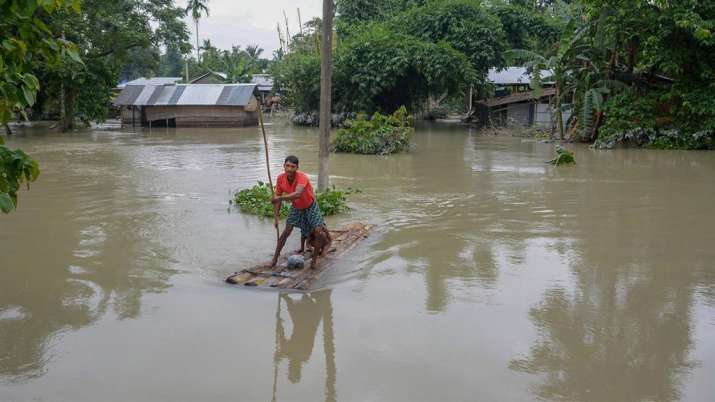Water, the second most important factor for survival can also turn the tables to us unexpectedly and most lethally. Recently, the “unpredictable” disasters of nature have shown a colossal effect on Assam causing damage to human lives, livelihood and animals.
2020 has hit mankind in several ways and the most common are natural calamities. While COVID-19 cases are at an all-time high, natural calamities have been frequent ones for the country The recent one is Assam as the channel of floodwaters washed over the state last week. Over 27,63,719 people in 25 districts had vastly been affected, the death toll had reached 70+ mark. Some 47,465 people have taken shelter in 649 relief camps across the state. Excess of water took its toll on livestock and damaged 1,16,404 hectares of the cultivated area according to the report by Hindustan Times. The tragedies also reflected on social media as #IndiaForAssam and #Assamfloods trending on twitter..
The Kaziranga National Park has experienced submergence which is alarming news too. The other wildlife zones like the Rajiv Gandhi Orang National Park and Pobitora Wildlife Sanctuary have also paid heavy prices due to this flood.

‘First flooding‘ was considered a good omen previously as it was precious for replenishing the fertility of the land. However, undue flooding leaves the region staggering on an annual basis and ironically they are affected by the side effects of good human causes in the form of coal mining. Among the mightiest rivers of India is the Brahmaputra, a trans-boundary river that passes through Assam, instability of sedimentation and steep slopes makes it extremely dangerous. Additionally, the entire area falls under in an earthquake-prone zone under disastrous blessings of coal mines.
Coal mining is a responsible factor for flooding to fire and explosion. With numerous tragic and major loss events in the headlines over past months, let’s see what are the main risks affecting this sector and how these can be mitigated.
While the mining industry has the potential to disrupt ecosystems by wiping out wildlife populations in many different ways. The clearing of land i.e. Deforestation leads to floods in downstream areas as it reduces the upstream area’s capacity to absorb rainwater, resulting in greater proportions of runoff flowing water into the city. Tailings also wash into the area’s rivers from mines, which restrict their flow.
Although each year in Assam, lives are lost, millions are displaced, villages, crops, and basic infrastructure get destroyed in Assam. The melted water from the Himalayas in summer merges with the monsoon, causing the annual flooding.
At the time when we look at the solutions for flooding, the faulty embankments worsen the situation. What would console the flood-hit citizen when the structure meant to control the floods worsens it more? As reported by The Quint, 4,500 km immense Embankments encircling 103 tributaries, alongside the Brahmaputra have been built costing Rs 30,000 crore over the last 60 years by successive governments in Assam. Landslides due to mining and faulty drainage have weakened Assam’s ageing embankments. Moreover, 80 per cent of them are poorly maintained.
Is it limited to North-East region?
Not only Kaziranga but every other national park faces problems because of Mining. Extensive deforestation and cutting of highlands have only worsened the situation. The NTCA has blamed the “stone mining or quarrying established in the intervening area” between Kaziranga and Karbi Anglong hills for “destroying the wildlife habitat which is essential for long-ranging species like tigers, wild buffalos and Indian elephant.”
Is There a Solution?
Well, it is not possible to stop mining as India is a developing nation and coal has a lion’s share in it. But the stakeholders of India can direct the country towards sustainable development.
Asking Himanshu Thakkar(Head of South Asia Network on dams, rivers and people), was quoted in the Quint mentioning the importance of better Flood forecasting, i.e. Information about floods forecasts should reach the affected villages in time. He said, “We must strengthen just those embankments that are required. And in place of constructing embankments, we should create more space for the river, despite restricting it.”
Another possible solution is the Sponge City. A sponge city is a city that is designed to passively absorb, clean and use rainfall in an ecologically familiar way that reduces hazardous and polluted runoff. It is connected to the main water plant in the city. Associated techniques contain spongy roads, rainwater harvesting, rooftop gardens and water conservatives such as ponds and lakes, even China and Japan are working on the same concept.
In the latest budget for 2020, the government has allotted Rs. 600 crores for “exploration of coal and lignite”, an increase of 20 per cent compared to the Rs. 500 crores allotted in 2019. Meanwhile, the budget for “conservation, safety, and infrastructure development in coal mines” have been reduced by almost 33 per cent from Rs. 200 crore in 2019 to Rs 135 crore in the budget (data taken from www.gov.in)
It’s high time for us to realize the importance of Sustainable development. The actions are taken, NTCA has instructed the Assam government to take “immediate action” to end mining, quarrying and stone crusher undertakings within a 10 km radius of the tiger reserve. But that’s not enough
India needs to shift it’s the focus from coal to solar, before the outbreak of COVID-19, Sunil Dahiya, an analyst at the Centre for Research on Energy and Clean Air was quoted in a report by Boell organization. He said, “there is a clear indication that coal will not fuel future electricity growth,” which will mostly be provided by renewables such as solar and wind.
Climate challenging crises are a new normal across the world. A magic pill that is specified to battle these impacts is complete phasing out of coal and transitioning to renewable power.
A report by the International Renewable Energy Agency’s (IRENA) said that renewable energy could assign more than 40 million people by 2050. It said that total energy sector job can reach 100 million by 2050, so the growth can be achieved even faster. If we take a step to make a change.
Perhaps it’s time that we end being normalizing on the yearly demolition and act, not just react.
Remember, the most important stakeholders of a country are its citizens!
Written by: Manoj Khetan and Srijani Roy Chowdhury

